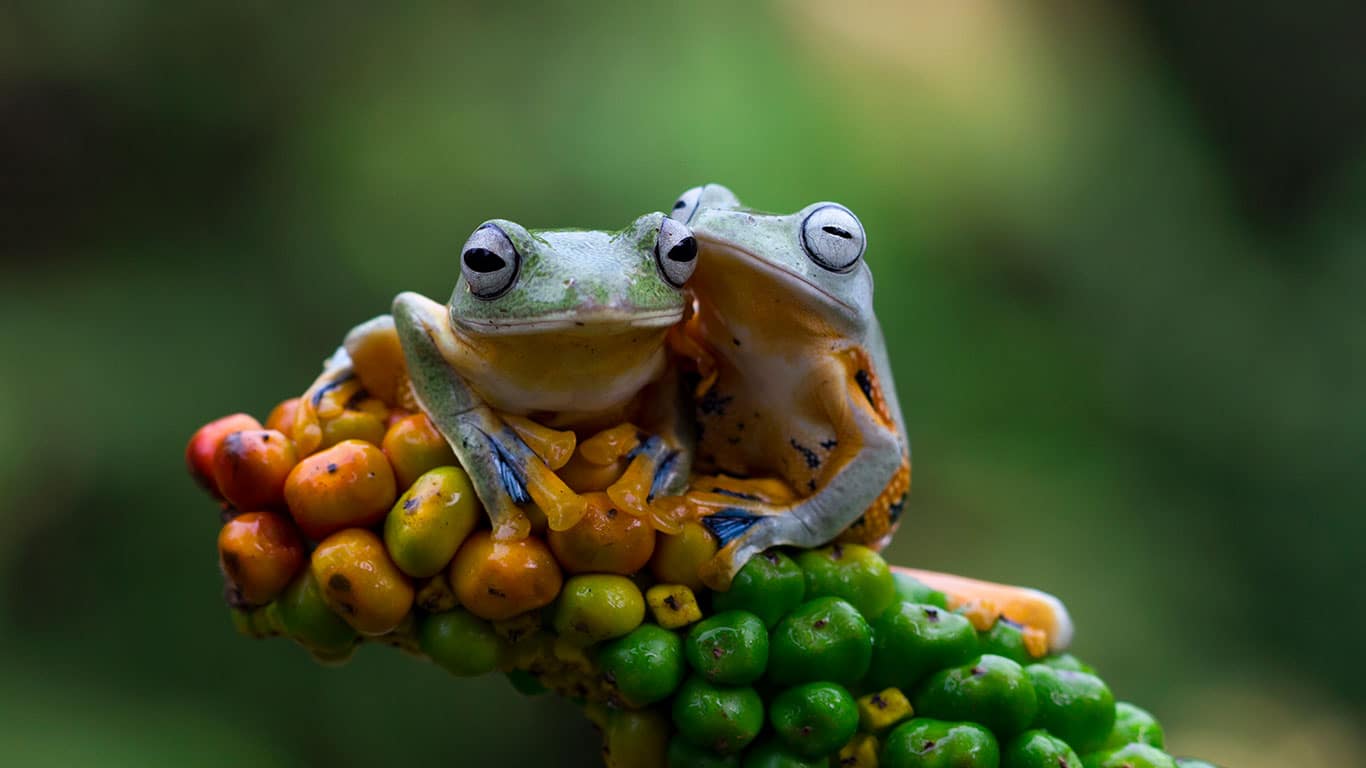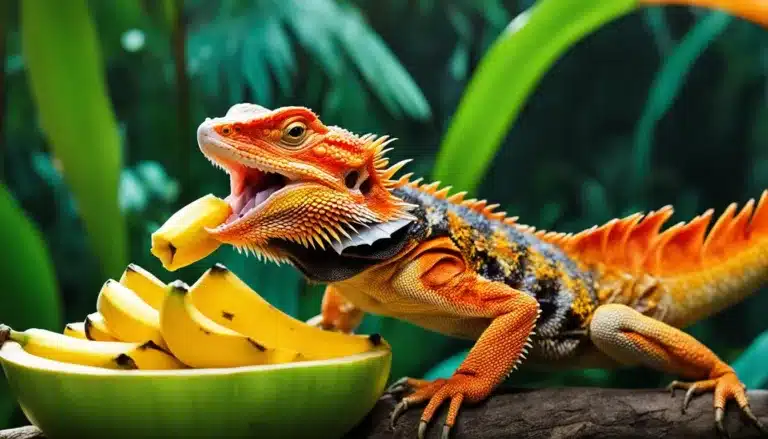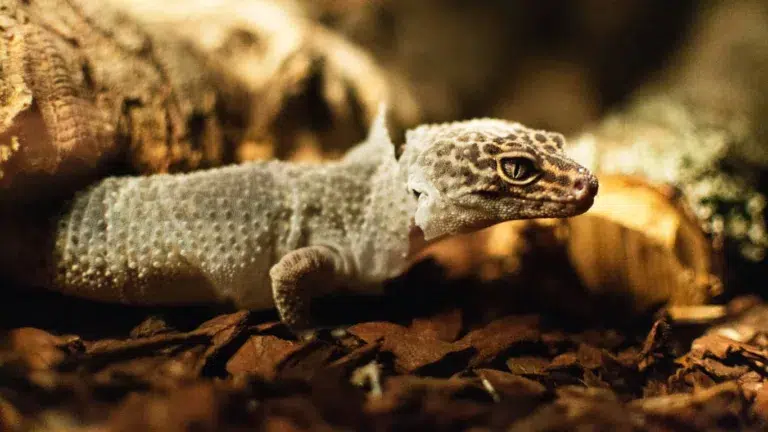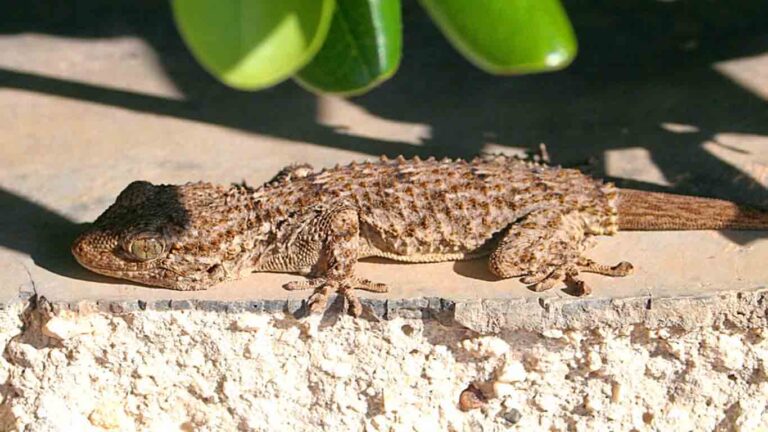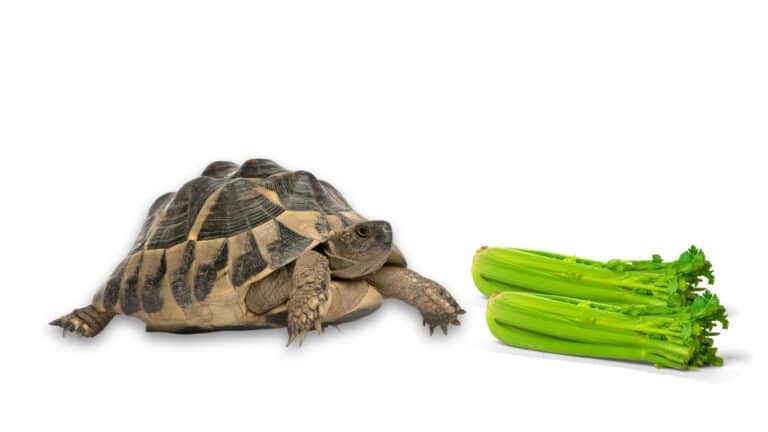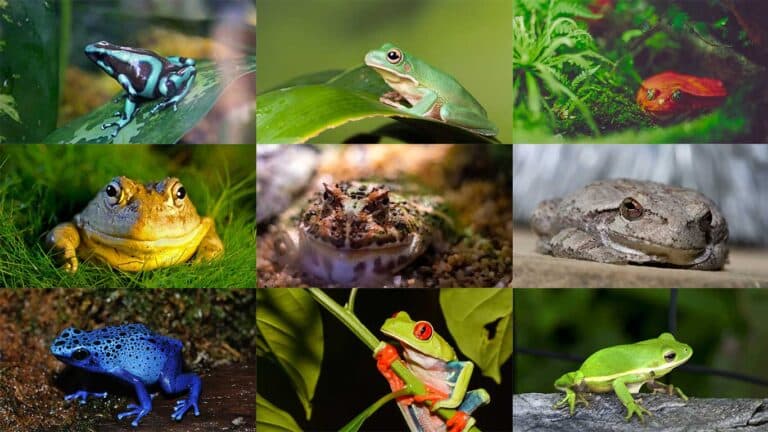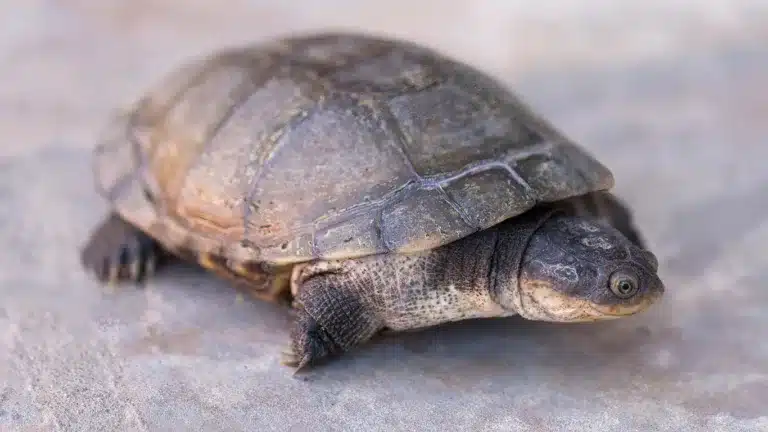Are you considering getting a pet frog but unsure about how long do pet frogs live?
Understanding the lifespan of pet frogs is crucial for responsible ownership. Different frog species have varying lifespans, and providing proper care can significantly extend their longevity.
In this comprehensive guide, we will explore-
- The lifespan of pet frogs.
- How to choose the right frog species for a pet.
- Creating their ideal habitat.
- Proper handling and care.
- Feeding and nutrition.
- Common health concerns.
- Buying and caring for pet frogs.
- The environmental significance of frogs.
- Their evolutionary history.
- The threats they face.
By the end, you’ll have all the information you need to become a knowledgeable and responsible frog owner.
Choosing the Right Frog Species for a Pet
When considering keeping a frog as a pet, it’s essential to choose the right species that suits your lifestyle and preferences. One popular choice for beginners is the White’s tree frog, known for its small size, docile nature, and tolerance for handling.
The White’s tree frog is an ideal pet for those who are new to frog-keeping. Its gentle temperament makes it easy to handle without causing stress to the frog. Additionally, its small size makes it suitable for living in compact enclosures.
One of the unique features of the White’s tree frog is its waxy skin coating, which enables it to tolerate more arid conditions. This makes it an excellent choice for homes with relatively low humidity levels or for individuals who prefer a less demanding environment for their pet frog.
Other Frog Species:
While the White’s tree frog is a popular option, there are various other frog species available that may appeal to different individuals. It’s important to research and consider the specific care requirements and lifespans of each species to ensure a suitable match for your circumstances.
The key to successful frog keeping lies in understanding the species’ natural habitat and replicating those conditions as closely as possible within a captive setting.
– Anna Wong, Volunteer
Here is a comparison table outlining some popular frog species for pets:
| Frog Species | Size | Temperament | Lifespan |
|---|---|---|---|
| White’s Tree Frog | Small | Docile | 7-10 years, some up to 20+ years |
| Pacman Frog | Medium | Aggressive | Average 10 years |
| Red-eyed Tree Frog | Small | Semi-arboreal | Average 5 years, some up to 10-15 years |
| African Dwarf Frog | Small | Peaceful | Average 5 years, some up to 20 years |
Remember, each frog species has its own specific care requirements and characteristics. It’s crucial to select a species that aligns with your ability to provide the necessary care, space, and environment.
Now that you have a better understanding of different frog species available as pets, you can make an informed decision and choose the species that best suits your preferences and lifestyle. Ensure you provide an appropriate habitat, proper care, and seek guidance from reputable sources to ensure the well-being and longevity of your pet frog.
Creating the Ideal Habitat for Your Pet Frog
Pet frogs require a suitable habitat to thrive. For those considering keeping a pet frog, it’s important to create an environment that mimics their natural habitat. This section will guide you on how to provide the ideal habitat for your pet frog, ensuring their health and well-being.
Choosing the Right Enclosure
The first step in creating a suitable habitat for your pet frog is to choose the right enclosure. For a White’s tree frog, a tall aquarium or terrarium is recommended to accommodate their arboreal nature. The enclosure should be spacious enough for the frog to move around comfortably.
Decorating the Enclosure
Once you have the enclosure, it’s time to add enrichment that replicates the frog’s natural habitat. Provide plenty of climbing opportunities, such as branches and cork bark, for the frog to explore and exercise. These climbing structures will also stimulate their natural instincts and help keep them mentally engaged.
Creating a Secure Environment
It’s crucial to ensure the enclosure is escape-proof. Use a tight-fitting lid to prevent your pet frog from escaping and keep them safe. Frogs are known for their jumping ability, so securing the lid is essential to avoid any accidents or the loss of your pet.
Adding Live Plants
Live plants can be a great addition to your pet frog’s habitat. They not only enhance the aesthetic appeal but also provide hiding spots and moisture control. However, it’s important to choose non-toxic plants that are safe for frogs. Research suitable plant species for frog habitats to ensure the well-being of your pet.
Creating a Dark Sleeping Area
Frogs are nocturnal creatures and require a dark area to sleep during daylight hours. Provide hiding spots like caves or dense foliage to create a dark and cozy sleeping area for your pet frog. This will help replicate their natural sleeping habits and promote a healthy sleep-wake cycle.
By creating an ideal habitat for your pet frog, you can ensure their comfort, happiness, and overall well-being. Remember to regularly assess and maintain the enclosure, monitor temperature and humidity levels, and provide a balanced diet to keep your pet frog thriving.
Proper Handling and Care for Pet Frogs
When it comes to keeping a frog as a pet, proper handling and care are essential for their well-being. By following a few guidelines, you can ensure a healthy and stress-free environment for your pet frog.
1. Handwashing
Before and after handling your pet frog, always remember to wash your hands thoroughly. Frogs have sensitive skin that can easily absorb chemicals and bacteria. By keeping your hands clean, you minimize the risk of transmitting any harmful substances to your pet.
2. Tank Cleaning
To maintain a clean and hygienic habitat for your pet frog, it’s important to spot-clean the tank daily. Remove any waste or debris to prevent the buildup of harmful bacteria. Regular cleaning helps ensure a healthy living environment for your frog to thrive.
3. Providing Clean Water
Ensure your pet frog has access to clean, non-chlorinated water at all times. Frogs require water for drinking and soaking, which helps keep their skin hydrated. Make sure to change the water regularly to prevent bacterial growth. It’s important to avoid using tap water that contains chlorine, as it can be harmful to your frog’s health.
4. Temperature and Humidity
Maintaining proper temperature and humidity levels in the frog’s habitat is crucial for their overall health. Research the specific requirements for your pet frog species and invest in a reliable thermometer and hygrometer to monitor these conditions accurately. Creating a comfortable environment will help your pet frog thrive.

5. Handling with Care
When handling your pet frog, it’s essential to do so gently and with great care. Avoid grasping them tightly or squeezing their bodies, as this can cause harm or distress. Instead, support their body with cupped hands and allow them to hop onto your palm. Always supervise any interaction with children or other pets to ensure the safety of both your pet frog and those around.
By following these guidelines for proper handling and care, you can enjoy a rewarding and fulfilling experience with your pet frog.
Feeding and Nutrition for Pet Frogs
Proper nutrition is vital for the health and longevity of pet frogs. In this section, we’ll explore what to feed your pet frog and how to ensure they’re getting the nutrients they need to thrive.
White’s tree frogs, a popular choice for pet enthusiasts, are insectivorous creatures. They enjoy a varied diet of live insects, which helps replicate their natural feeding habits. Some suitable live insects you can offer your pet frog include:
- Cricket (Gryllidae)
- Moth (Lepidoptera)
- Beetle (Coleoptera)
- Cockroach (Blattodea)
- Grasshopper (Orthoptera)
The amount of food and feeding frequency depends on your frog’s size and activity level. As a general guideline, feed your pet frog an appropriate-sized meal daily or every other day. Monitoring their behavior and body condition can help determine if adjustments are needed.
It’s crucial to ensure that the prey items you provide to your pet frog are gut-loaded. Gut-loading means feeding the live insects a nutritious diet before offering them to your frog. This helps ensure your frog receives essential vitamins, minerals, and nutrients from its food.
Additionally, dusting the live insects with calcium-vitamin supplements is important. These supplements help provide the necessary nutrients for your frog’s bone health and overall well-being. The specific supplementation schedule may vary depending on your frog’s species and age.
Remember, it’s best to consult with a reptile veterinarian or experienced frog keeper to determine the ideal diet and supplementation regimen for your pet frog.
Nutritional Guidelines for Pet Frogs
| Nutrient | Required Amount |
|---|---|
| Protein | High, insect-based |
| Fat | Low to moderate |
| Calcium | Supplemented |
| Vitamin A | Supplemented if needed |
| Vitamin D3 | Supplemented if needed |
| Overfeeding | Avoid; can lead to obesity |
Frog Feeding Tips:
- Gut-load live insects with nutritious foods before feeding.
- Dust live insects with calcium-vitamin supplements.
- Observe your frog’s behavior and adjust feeding frequency as needed.
- Consult with a reptile veterinarian or experienced frog keeper for specific dietary recommendations.
Feeding your pet frog a well-balanced diet not only supports their health but also promotes their natural behaviors. By providing proper nutrition, you can help ensure their longevity and enhance their overall quality of life.

Common Health Concerns for Pet Frogs
When keeping a frog as a pet, it’s essential to be aware of common health concerns that can affect these fascinating amphibians. One of the most serious and fatal diseases that pet frogs can contract is chytridiomycosis, caused by the chytrid fungus.
This highly contagious disease has had detrimental effects on amphibian populations around the world, contributing to their decline. To protect your pet frog and prevent the spread of disease, it is crucial to be cautious when acquiring a pet frog.
“To prevent the spread of disease, it’s crucial to only buy pet frogs from reputable breeders who can verify their health and captive breeding.”
By purchasing pet frogs from reputable breeders, you can ensure that the frogs have undergone health screenings and were bred in controlled environments. This significantly reduces the risk of introducing diseased frogs into your home and potentially harming your pet.
Additionally, it’s important to establish good hygiene practices when handling pet frogs. Wash your hands thoroughly both before and after handling them to avoid transmitting any chemicals or bacteria that could be harmful to their sensitive skin.
Protect Your Pet Frog’s Health
To keep your pet frog healthy and thriving in its habitat, it’s crucial to monitor its behavior and physical condition. Look out for any signs of illness, such as changes in appetite, behavior, or appearance.
- Regularly observe your pet frog’s skin for any signs of discoloration, lesions, or abnormalities.
- Ensure your pet frog has access to clean, non-chlorinated water for drinking and soaking.
- Keep the enclosure clean and maintain appropriate temperature and humidity levels.
- Provide a balanced diet of live insects, ensuring they are gut-loaded and dusted with calcium-vitamin supplements.
- Seek veterinary care from a reptile specialist if you notice any concerning symptoms or behaviors in your pet frog.
By following these guidelines and taking proactive measures to prevent disease, you can provide a safe and healthy environment for your pet frog, enhancing its overall well-being and longevity.
Buying and Caring for Pet Frogs
When it comes to adding a pet frog to your family, it’s important to choose the right source. Pet frogs, including the White’s tree frog, can be easily found at reptile shows and from reputable online breeders. These options provide a safer and healthier alternative to buying wild-caught frogs. While wild-caught frogs may seem tempting, they often carry parasites or infections that can compromise their health in captivity. Additionally, the stress of adjusting to captivity can be overwhelming for wild-caught frogs, leading to a shorter lifespan.
When purchasing a pet frog, look for signs of good health. Healthy frogs should display a good appetite, be active, and have clear eyes and smooth, moist skin. Avoid frogs that appear lethargic, have any signs of illness, or show poor appetite, as these may indicate underlying health issues. Opting for frogs that have been bred in captivity ensures that they are better adapted to living in an artificial environment and have a higher chance of living a longer, healthier life.
Comparison of Buying Options for Pet Frogs
| Buying Option | Advantages | Disadvantages |
|---|---|---|
| Reputable Online Breeders | Guarantee of captive-bred frogsWide selection of healthy frogsConvenient shipping | Slightly higher cost due to shipping |
| Reptile Shows | Opportunity to see and select frogs in personPotential to find rare or unique frog speciesAdvice and guidance from breeders | Limited availability based on show schedulePossible travel required |
| Wild-Caught Frogs | Possible cost savings | Risk of parasites or infectionsDifficulty in adjusting to captivityShorter lifespan |
Remember, choosing the right source for your pet frog is crucial for their well-being and longevity. By opting for captive-bred frogs from reputable sources, you can ensure their overall health and increase their chances of enjoying a long and fulfilling life in your care.
Environmental Significance of Frogs
Frogs are more than just cute and fascinating creatures. They play a vital role in maintaining the delicate balance of ecosystems. As both predators and prey, frogs help regulate populations of various organisms, keeping ecological systems in check. Unfortunately, declines in frog populations often indicate environmental damage and serve as warning signs of wider ecosystem issues.
Frogs act as environmental bellwethers, reflecting the health of their habitats. Their permeable skin makes them highly susceptible to changes in the environment, including pollution, habitat destruction, and climate change. When frog populations decline, it raises concerns about the overall health and well-being of the ecosystem they call home.
“The disappearance of frogs can signal the loss of a clean, functioning ecosystem.”
Conservation efforts are crucial for understanding the causes behind declining frog populations and taking measures to protect their habitats. Scientists are working tirelessly to study the impact of pollution, habitat loss, and disease on frog populations, in hopes of finding effective solutions to mitigate these threats.
Furthermore to their ecological significance, frogs hold cultural importance in various aspects. They have been featured in literature, art, folklore, and religious symbolism throughout history. Their unique qualities and behaviors have inspired poets, writers, and artists, becoming a source of inspiration and reflection on the wonders of nature.

Frogs in Literature, Symbolism, and Religion
The significance of frogs extends beyond their ecological role. They have captured the human imagination and hold deep symbolic meanings in different cultures. In literature, frogs symbolize transformation, rebirth, and renewal. From ancient mythology to modern stories, frogs often represent change and personal growth.
In some religious traditions, frogs are seen as sacred creatures associated with fertility, abundance, and spiritual cleansing. They are considered intermediaries between the earthly and spiritual realms, embodying the cycle of life and death.
The enchanting qualities of frogs have also found their way into symbolism and folklore. From the story of the Frog Prince to the Chinese symbol of prosperity and luck, these amphibians have become icons of positive attributes and fortunes.
Through their environmental significance and cultural symbolism, frogs continue to captivate our imagination and remind us of the interconnectedness of all living creatures. Protecting their habitats and preserving their populations is not only essential for the health of ecosystems but also for the preservation of these remarkable creatures that have inspired humanity for generations.
The Evolutionary History of Frogs
Frogs belong to the order Anura, which includes all modern frogs and some fossil species. The origins and relationships between the three main groups of amphibians (frogs, salamanders, and caecilians) are still debated among scientists. Molecular phylogenetic studies suggest that frogs originated in the Paleozoic or early Mesozoic era, and their diversification and divergence from other amphibians occurred before the breakup of the supercontinent Pangaea.
Frog Phylogeny
The phylogeny of frogs, salamanders, and caecilians is a subject of ongoing research. Scientists use molecular phylogenetics to study the genetic relationships between species and understand their evolutionary history. These studies analyze the DNA and genetic markers to create phylogenetic trees that illustrate the evolutionary relationships among different organisms.
“Molecular phylogenetic studies have provided insights into the evolutionary history of frogs, shedding light on their relationships with other amphibians and contributing to our understanding of their ancient origins.”
– Dr. Jane Collins, Evolutionary Biologist
Frog Origins and Diversification
The exact timing and origin of frogs is still a matter of scientific investigation. However, evidence points to their existence in the Paleozoic or early Mesozoic era, which predates the breakup of the supercontinent Pangaea. Frog fossils from the Triassic period have been found, suggesting that they were already diverse and widespread during that time.
Evolutionary Adaptations
Frogs have evolved a range of adaptations that have allowed them to thrive in various habitats. These adaptations include their unique reproductive strategies, specialized skin that aids in respiration and water balance, and powerful jumping legs that enable them to catch prey and escape from predators.
Despite the challenges of studying frog evolution due to the scarcity of fossil evidence, ongoing research and advances in molecular biology continue to provide valuable insights into the evolutionary history of these fascinating creatures.
Stay tuned for the next section exploring the threats to frog populations and the importance of frog conservation.
Threats to Frog Populations
Frog populations around the world have been declining since the 1950s. More than one-third of frog species are considered threatened with extinction, and over 120 species have become extinct since the 1980s. Several factors contribute to this decline:
- Habitat Loss: Destruction of natural habitats, including wetlands and forests, deprives frogs of their breeding and feeding grounds. Development, deforestation, and urbanization are major contributors to habitat loss.
- Pollution: Water and air pollution, including chemical runoff from agriculture, industrial waste, and pesticides, contaminate frog habitats and can lead to reproductive issues, weakened immune systems, and increased susceptibility to diseases.
- Climate Change: Rising temperatures, changes in rainfall patterns, and habitat disruption due to climate change can negatively impact frog populations. Frogs are highly sensitive to environmental changes, and even slight shifts in temperature and moisture levels can affect their survival.
- Diseases: Chytridiomycosis, caused by the chytrid fungus, is a deadly disease that has devastated frog populations worldwide. Additionally, other emerging infectious diseases pose a significant threat to frog populations.
- Introduction of Non-Native Species: The introduction of non-native species, such as predatory fish or invasive frogs, can disrupt ecosystems and directly impact native frog species through competition for resources and predation.
Conservation efforts are crucial to protect frog populations and ensure their long-term survival. By addressing these threats, promoting habitat conservation, and raising awareness about the importance of frogs in maintaining healthy ecosystems, we can help preserve these fascinating amphibians for future generations.
| Threats | Impact |
|---|---|
| Habitat Loss | Deprives frogs of breeding and feeding grounds, leading to population decline. |
| Pollution | Contaminates frog habitats and disrupts their reproductive and immune systems. |
| Climate Change | Alters the environment and reduces frog populations’ ability to adapt and survive. |
| Diseases | Deadly diseases, such as chytridiomycosis, have wiped out frog populations globally. |
| Introduction of Non-Native Species | Competition and predation from invasive species threaten native frog populations. |
The Importance of Frog Conservation
Frog conservation is crucial for the preservation of species diversity and the overall health of ecosystems. Frogs play a vital role as indicators of environmental health, and their decline can indicate larger ecological problems. Protecting frog populations is essential for maintaining balanced ecosystems and sustaining biodiversity.
Frogs are sensitive to environmental changes, making them valuable indicators of an ecosystem’s health. Their population decline can signal pollution, habitat loss, climate change, and other detrimental factors that can have far-reaching impacts on the entire ecosystem. By monitoring and protecting frog populations, we can gain insights into the overall well-being of our environment and take necessary actions to mitigate threats.
Efforts to protect frog populations involve creating and preserving suitable habitats for them to thrive. This includes conserving wetlands, ponds, and other breeding grounds, as well as ensuring water quality and availability. Additionally, we must reduce pollution and the use of harmful chemicals that can contaminate their habitats. Through responsible land management and conservation practices, we can create a sustainable environment for frogs and other species.
Frog conservation also requires raising awareness about the importance of these delicate creatures. Education plays a crucial role in inspiring individuals and communities to take action. By highlighting the critical role frogs play in maintaining healthy ecosystems, we can foster a sense of responsibility and a greater commitment to conservation efforts.
We must recognize that frogs are not mere bystanders in the natural world. They are the caretakers of our environment, and their well-being directly impacts our own. By prioritizing frog conservation, we safeguard the delicate balance of nature.
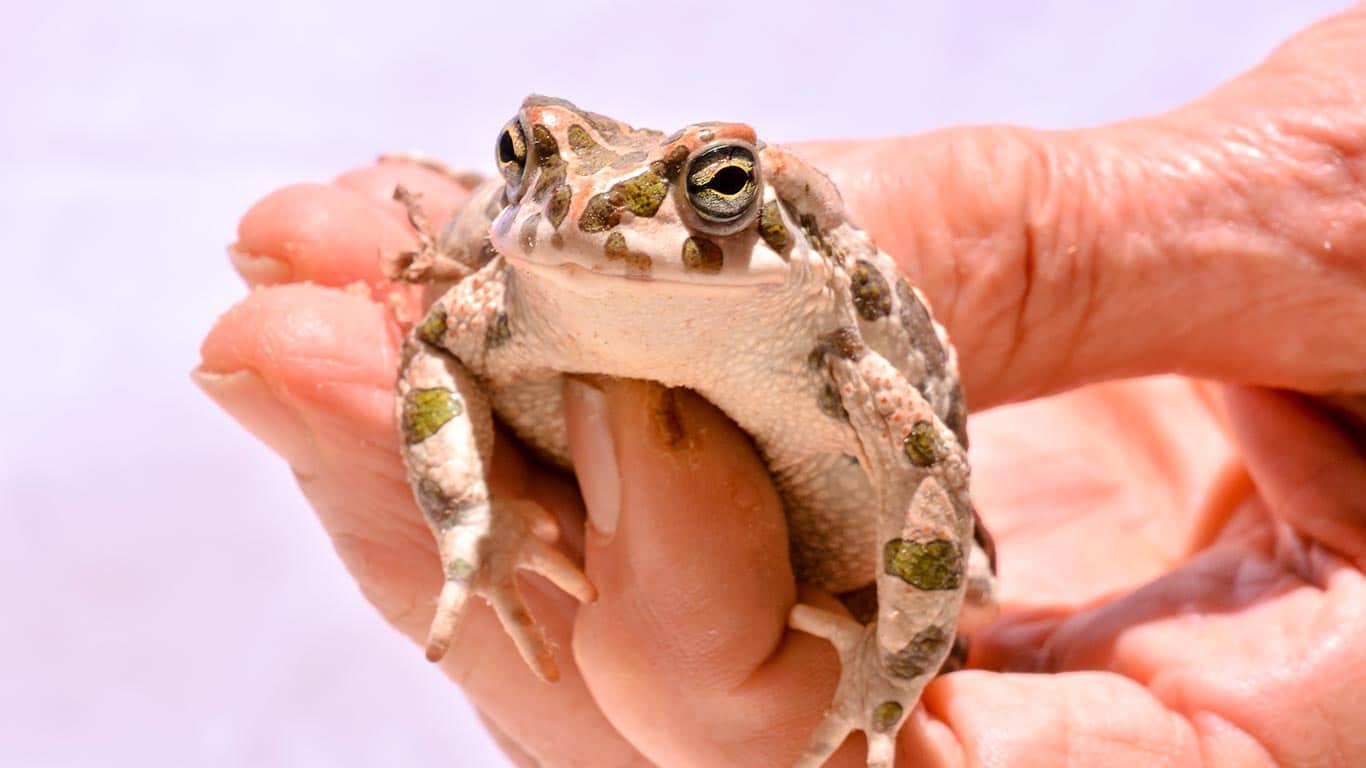
The Role of Citizen Science in Frog Conservation
Citizen science initiatives have emerged as valuable tools in frog conservation. By involving the public in data collection, researchers can gather extensive information about frog populations, distribution, and habitat preferences. This collective effort enhances our understanding of these amazing creatures and enables us to make informed decisions for their protection.
The Economic Value of Frog Conservation
Besides their ecological significance, frogs also hold economic value. They contribute to pest control by consuming insects that can damage crops and spread diseases. Additionally, they have potential in medical research as sources of bioactive compounds and medicinal secretions. By conserving frog populations, we protect these economic benefits and promote sustainable practices.
| Benefits of Frog Conservation | Actions Required |
|---|---|
| Preserves biodiversity and ecological balance | Protect frog habitats, reduce pollution, raise awareness |
| Indicates environmental health | Monitor frog populations, study their behaviors and movements |
| Enhances pest control and crop protection | Ensure suitable habitats for frogs, minimize pesticide use |
| Contributes to medical research | Safeguard frog populations, support sustainable practices |
Join the Pet Planet Diaries
Sign up for our newsletter to get the latest tips, stories, and exclusive insights into the wonderful world of pets.
Final Answers to How Long Do Pet Frogs Live
Pet frogs can live for several years with proper care and a suitable habitat. By providing an optimal environment, a balanced diet, and regular veterinary care, you can help extend the longevity of your pet frog. Remember that different frog species may have different lifespans, so it’s important to research and understand the specific needs of your pet.
Moreover to caring for your pet frog, it’s crucial to understand the threats facing wild frog populations and support conservation efforts. Frog populations worldwide are declining due to various factors such as habitat loss, pollution, climate change, and diseases. By raising awareness about the importance of frog conservation and contributing to habitat preservation, you can help ensure the long-term survival of these fascinating amphibians.
Whether you have a pet frog or simply appreciate these unique creatures, promoting frog longevity is essential. By taking proactive steps to provide a proper habitat, nutrition, and healthcare for your pet frog, you can enjoy their companionship for years to come. And by supporting frog conservation initiatives, you can help protect these valuable species for future generations to appreciate and admire.
FAQ
How long do pet frogs live?
The lifespan of pet frogs can vary depending on the species. For example, the White’s tree frog, a popular pet frog species, typically lives up to 7-10 years, but some have been reported to live over 20 years.
Can you keep a frog as a pet?
Yes, frogs can be kept as pets. However, it’s important to choose the right species of frog and provide them with proper care to ensure their well-being.
How do I choose the right frog species for a pet?
When choosing a frog species, consider factors such as size, temperament, care requirements, and lifespan. The White’s tree frog is a popular choice for beginners, as it is small, docile, and tolerant of handling.
How do I create the ideal habitat for my pet frog?
Pet frogs require a suitable habitat to thrive. For a species like the White’s tree frog, a tall aquarium with climbing enrichment and a tight-fitting lid is recommended. Live plants can be added, but ensure they are non-toxic and pesticide-free.
How do I properly handle and care for my pet frog?
When handling pet frogs, wash your hands thoroughly before and after to avoid transmitting chemicals or bacteria. Spot-clean the tank daily, provide access to clean, non-chlorinated water, and maintain proper temperature and humidity levels in the habitat.
What should I feed my pet frog?
White’s tree frogs, and many other frog species, are insectivorous. They should be fed a varied diet of live insects, such as crickets, moths, beetles, and cockroaches. Prey items should be gut-loaded with nutritious foods and dusted with calcium-vitamin supplements.
What are some common health concerns for pet frogs?
One of the most serious health concerns for pet frogs is chytridiomycosis, a fatal disease caused by the chytrid fungus. It’s important to only buy pet frogs from reputable breeders who can verify their health and captive breeding.
Where can I buy and how do I care for pet frogs?
Pet frogs, including White’s tree frogs, can be purchased from reptile shows and online breeders. Avoid buying wild-caught frogs, as they may carry parasites or infections. Look for healthy frogs that exhibit a good appetite and have been bred in captivity for optimal health.
What is the environmental significance of frogs?
Frogs play an essential role in ecosystems as both predators and prey. They are considered environmental bellwethers, with declines in frog populations often indicating environmental damage. Frogs also have cultural significance in literature, symbolism, and religion.
What is the evolutionary history of frogs?
Scientists believe that frogs originated in the Paleozoic or early Mesozoic era and diverged from other amphibians before the breakup of the supercontinent Pangaea. However, the origins and relationships between the main groups of amphibians (frogs, salamanders, and caecilians) are still debated.
What are the threats to frog populations?
Frog populations have been declining since the 1950s. Factors contributing to their decline include habitat loss, pollution, climate change, diseases like chytridiomycosis, and the introduction of non-native species.
Why is frog conservation important?
Frog conservation is important for preserving species diversity and maintaining the health of ecosystems. Frogs serve as important indicators of environmental health, and their decline can signal larger ecological problems. Efforts to protect frog populations include habitat preservation, pollution reduction, and raising awareness about the importance of conservation.

